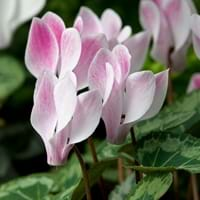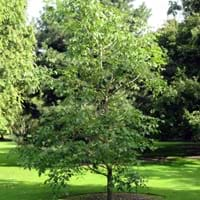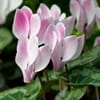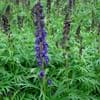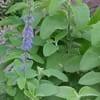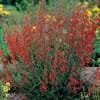Life Span
Perennial
Perennial
Type
Flowering Plants, Tubers
Trees
Origin
Europe, Mediterranean Basin, Middle East, North Africa, Somalia
Asia, Europe, North America
Types
Cyclamen Africanum, Cyclamen Alpinum, Cyclamen Cilicium, Cyclamen Coum
Black Ash, Blue Ash, California Ash, Carolina Ash, European Ash
Habitat
Alpine Meadows, Rocky areas, Woods
Forest edges, Hillside, Woods
USDA Hardiness Zone
5-9
3-9
Sunset Zone
15, 16, 17, 18, 19, 20, 21, 22, 23, 24
9, 12, 13, 14, 15, 16, 17, 18, 19, 20, 21, 22, 23, 24
Habit
Clump-Forming
Oval or Rounded
Flower Color
Pink, Purple, White
White
Flower Color Modifier
Not Available
Not Available
Fruit Color
Brown
Not Available
Leaf Color in Spring
Several shades of Green
Dark Green
Leaf Color in Summer
Not Available
Dark Green
Leaf Color in Fall
Green, Silver
Dark Green
Leaf Color in Winter
Green, Silver
Dark Green
Leaf Shape
Heart-shaped
Oblovate
Plant Season
Autumn, Spring, Summer, Winter
All year
Sunlight
Indirect sunlight
Full Sun, Part sun
Type of Soil
Clay, Sandy, Well drained
Loamy, Sandy
The pH of Soil
Acidic
Acidic
Soil Drainage
Well drained
Well drained
Bloom Time
Autumn, Spring, Summer
Late Spring, Spring
Tolerances
Not Available
Drought, Pollution, Soil Compaction
Where to Plant?
Container, Ground, Pot
Ground
How to Plant?
From bulbs, Seedlings
Grafting, Seedlings, Stem Planting, Transplanting
Plant Maintenance
Medium
Medium
Watering Requirements
Do not water frequently, It cannot sustain wet-feet, Keep the ground moist but not water-logged, Prefer drip-irrigation instead of Over-head watering, Water when soil is dry
Does not require lot of watering, Medium, Prefer drip-irrigation instead of Over-head watering
In Summer
Lots of watering
Lots of watering
In Spring
Moderate
Moderate
In Winter
Average Water
Average Water
Soil Type
Clay, Sandy, Well drained
Loamy, Sandy
Soil Drainage Capacity
Well drained
Well drained
Sun Exposure
Indirect sunlight
Full Sun, Part sun
Pruning
Cut or pinch the stems, Prune if you want to improve plant shape, Prune ocassionally, Prune to control growth, Prune when plant is dormant, Remove dead leaves, Remove dead or diseased plant parts
Prune in winter, Prune prior to new growth
Fertilizers
All-Purpose Liquid Fertilizer
All-Purpose Liquid Fertilizer
Pests and Diseases
Aphids, Botrytis Cinerea, Gray mold, Mice, Mites, Root weevil, Slugs, Snails, Squirrels
Bark splits, Crown gall, Epicormic Sprouting, Woodpecker feeding
Plant Tolerance
Drought
Drought
Flower Petal Number
Single
Single
Foliage Texture
Medium
Medium
Foliage Sheen
Matte
Glossy
Attracts
Not Available
Birds
Allergy
Respiratory problems
Not Available
Aesthetic Uses
Showy Purposes
Not Available
Beauty Benefits
Not Available
Not Available
Environmental Uses
Air purification
Air purification
Medicinal Uses
Digestive disorders, Menstrual Disorders
Fever, Liver problems
Part of Plant Used
Root, Stem
Leaves, Stem
Other Uses
Showy Purposes, Used as an ointment
Used as Ornamental plant
Used As Indoor Plant
Yes
No
Used As Outdoor Plant
Yes
Yes
Garden Design
Not Available
Shady Tree, Showy Tree
Botanical Name
Cyclamen Persicum
Fraxinus
Common Name
Cyclamen or Florist's Cyclamen
Ash Tree
In Hindi
Sikalemen
राख पेड़
In Spanish
Ciclamen
Fresno
In Greek
κυκλάμινο
δέντρο Ash
In Portuguese
Cíclame
Freixo
In Polish
Cyklamen
Jesion
In Latin
Cyclamīnos
Fraxinum
Phylum
Anthophyta
Anthophyta
Class
Dicotyledonae
Magnoliopsida
Family
Primulaceae
Oleaceae
Clade
Not Available
Angiosperms, Asterids, Eudicots
Subfamily
Myrsinoideae
Not Available
Importance of Cyclamen and Ash Tree
Want to have the most appropriate plant for your garden? You might want to know the importance of Cyclamen and Ash Tree. Basically, these two plants vary in many aspects. Compare Cyclamen and Ash Tree as they differ in many characteristics such as their life, care, benefits, facts, etc. Every gardener must at least have the slightest clue about the plants he wants to plant in his garden. Compare their benefits, which differ in many ways like facts and uses. The medicinal use of Cyclamen is Digestive disorders and Menstrual Disorders whereas of Ash Tree is Fever and Liver problems. Cyclamen has beauty benefits as follows: Not Available while Ash Tree has beauty benefits as follows: Not Available.
Compare Facts of Cyclamen vs Ash Tree
How to choose the best garden plant for your garden depending upon its facts? Here garden plant comparison will help you to solve this query. Compare the facts of Cyclamen vs Ash Tree and know which one to choose. As garden plants have benefits and other uses, allergy is also a major drawback of plants for some people. Allergic reactions of Cyclamen are Respiratory problems whereas of Ash Tree have Not Available respectively. Having a fruit bearing plant in your garden can be a plus point of your garden. Cyclamen has no showy fruits and Ash Tree has no showy fruits. Also Cyclamen is flowering and Ash Tree is flowering. You can compare Cyclamen and Ash Tree facts and facts of other plants too.
